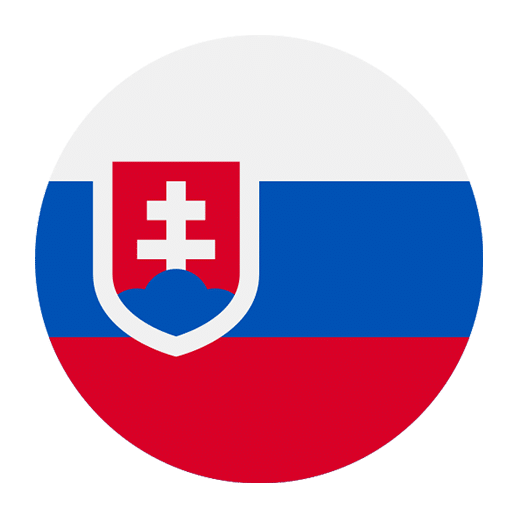In the digital age, social media has become a ubiquitous presence in our lives. Platforms like Facebook, Instagram, Twitter, and TikTok offer more than just a way to stay connected; they shape our communication, influence our culture, and even affect our languages. The Slovak language, like many others, has not been immune to the impact of social media. This article delves into the intricate ways in which social media has influenced the Slovak language, both positively and negatively.
The Rise of Social Media in Slovakia
Social media platforms have rapidly gained popularity in Slovakia over the past decade. According to recent statistics, a significant portion of the Slovak population actively uses social media, with Facebook leading the charge, followed by Instagram and TikTok. These platforms have become primary sources for news, entertainment, and social interaction. This shift has inevitably had an impact on the Slovak language, changing how people communicate and interact with each other.
Language Simplification and Informality
One of the most noticeable effects of social media on the Slovak language is the shift towards simplification and informality. Social media platforms encourage brevity and conciseness, often limiting the number of characters users can employ. This constraint has led to the adoption of shorter sentences, abbreviations, and a more casual tone in communication.
For instance, it’s common to see the use of “btw” (by the way), “omg” (oh my god), and other English abbreviations in Slovak social media conversations. This trend is particularly prominent among younger users who are more inclined to blend Slovak with English terms. While this can make communication faster and more efficient, it also raises concerns about the erosion of traditional language forms and the potential for a decline in language proficiency.
Introduction of New Vocabulary
Social media has also played a significant role in introducing new vocabulary to the Slovak language. Many of these new terms are borrowed from English, reflecting the global influence of the internet and social media culture. Words like “selfie,” “hashtag,” and “influencer” have seamlessly integrated into everyday Slovak conversations.
Additionally, social media trends and memes often generate new slang and colloquial expressions. For example, phrases like “likeovať” (to like) and “shareovať” (to share) have become commonplace, derived directly from their English counterparts. While this influx of new vocabulary can enrich the language, it also poses challenges for language purists who fear the dilution of the Slovak lexicon.
The Role of Influencers and Content Creators
Influencers and content creators wield considerable power on social media platforms. Their language choices and styles significantly impact their followers, shaping linguistic trends and norms. In Slovakia, popular influencers often set the tone for how language is used online.
Code-Switching and Bilingualism
Many Slovak influencers are bilingual, seamlessly switching between Slovak and English in their posts and videos. This practice, known as code-switching, has become a hallmark of social media communication in Slovakia. It reflects the globalized nature of social media, where users are exposed to multiple languages and cultures simultaneously.
While code-switching can enhance linguistic versatility and cultural awareness, it also raises questions about language preservation. Some worry that the frequent use of English could overshadow Slovak, especially among younger generations who may prioritize English for its perceived coolness and global utility.
Standardization and Language Trends
Influencers often set linguistic trends that their followers eagerly adopt. For example, the use of certain catchphrases, hashtags, and stylistic elements can quickly become widespread. This phenomenon can lead to a form of linguistic standardization, where certain phrases or styles dominate social media discourse.
However, this standardization can be a double-edged sword. While it fosters a sense of community and shared identity among users, it can also stifle linguistic diversity and creativity. There’s a risk that unique regional dialects and expressions may be overshadowed by the dominant trends propagated by influencers.
Challenges and Concerns
The impact of social media on the Slovak language is not without its challenges and concerns. While it offers opportunities for linguistic innovation and cultural exchange, it also poses risks to language integrity and proficiency.
Language Proficiency and Literacy
The informal and abbreviated nature of social media communication can impact language proficiency and literacy. The frequent use of slang, abbreviations, and emojis may hinder the development of strong writing skills, particularly among younger users. Educators and language experts have expressed concerns that this trend could lead to a decline in literacy rates and a weakening of traditional language skills.
Moreover, the reliance on autocorrect and predictive text features can diminish users’ ability to spell correctly and construct grammatically sound sentences. This phenomenon is not unique to Slovak; it is a global issue that affects all languages in the digital age.
Preservation of Slovak Language and Culture
The influx of English vocabulary and the dominance of global social media trends pose a threat to the preservation of the Slovak language and culture. While linguistic borrowing is a natural phenomenon, excessive reliance on foreign terms can erode the unique identity of the Slovak language.
Language preservation efforts are crucial in maintaining cultural heritage and ensuring that future generations can connect with their roots. Initiatives to promote the use of Slovak in digital spaces, support for Slovak content creators, and educational programs focused on language proficiency can help mitigate these risks.
Opportunities for Language Learning and Exchange
Despite the challenges, social media also offers unique opportunities for language learning and cultural exchange. It provides a platform for individuals to engage with the Slovak language in diverse and dynamic ways.
Language Learning Communities
Social media platforms host numerous language learning communities where users can practice Slovak with native speakers and fellow learners. These communities offer a supportive environment for language exchange, enabling learners to improve their skills through real-time interactions.
Language learning apps, YouTube channels, and online courses also leverage social media to reach a broader audience. Content creators who focus on language education can provide valuable resources, such as vocabulary lists, grammar explanations, and pronunciation guides, making language learning more accessible and engaging.
Cultural Exchange and Global Connections
Social media facilitates cultural exchange by connecting people from different backgrounds and regions. Slovak speakers can share their traditions, customs, and language with a global audience, fostering mutual understanding and appreciation.
Moreover, social media allows Slovak expatriates and diaspora communities to stay connected with their homeland. They can share their experiences, maintain their linguistic and cultural ties, and contribute to the preservation and promotion of the Slovak language abroad.
The Future of Slovak Language in the Digital Age
The impact of social media on the Slovak language is a dynamic and evolving phenomenon. As digital communication continues to shape our linguistic landscape, it is essential to strike a balance between embracing innovation and preserving linguistic heritage.
Promoting Digital Literacy and Language Proficiency
To navigate the challenges posed by social media, promoting digital literacy and language proficiency is paramount. Educational institutions, policymakers, and language advocates must collaborate to ensure that individuals develop strong language skills alongside their digital competencies.
Integrating digital literacy programs into the curriculum can help students understand the impact of social media on language and develop strategies to use it responsibly. Encouraging critical thinking and media literacy can empower individuals to navigate the digital landscape while preserving their linguistic identity.
Supporting Slovak Content Creation
Supporting Slovak content creators is essential for maintaining a vibrant and diverse digital presence. Initiatives that provide funding, training, and resources for Slovak influencers, bloggers, and educators can foster the production of high-quality content in the Slovak language.
Moreover, promoting Slovak-language media and entertainment can help counterbalance the dominance of English-language content. By celebrating and amplifying Slovak voices, we can ensure that the Slovak language continues to thrive in the digital age.
Embracing Linguistic Diversity
Finally, embracing linguistic diversity is crucial for the future of the Slovak language. Social media should be a platform where all dialects, registers, and styles of Slovak are celebrated and respected. Encouraging users to explore and appreciate the richness of their language can help preserve its unique character while fostering a sense of pride and identity.
In conclusion, social media’s impact on the Slovak language is multifaceted, presenting both opportunities and challenges. While it has introduced new vocabulary, facilitated language learning, and fostered cultural exchange, it has also raised concerns about language proficiency, preservation, and standardization. By promoting digital literacy, supporting Slovak content creators, and embracing linguistic diversity, we can navigate these complexities and ensure that the Slovak language continues to flourish in the digital age.

